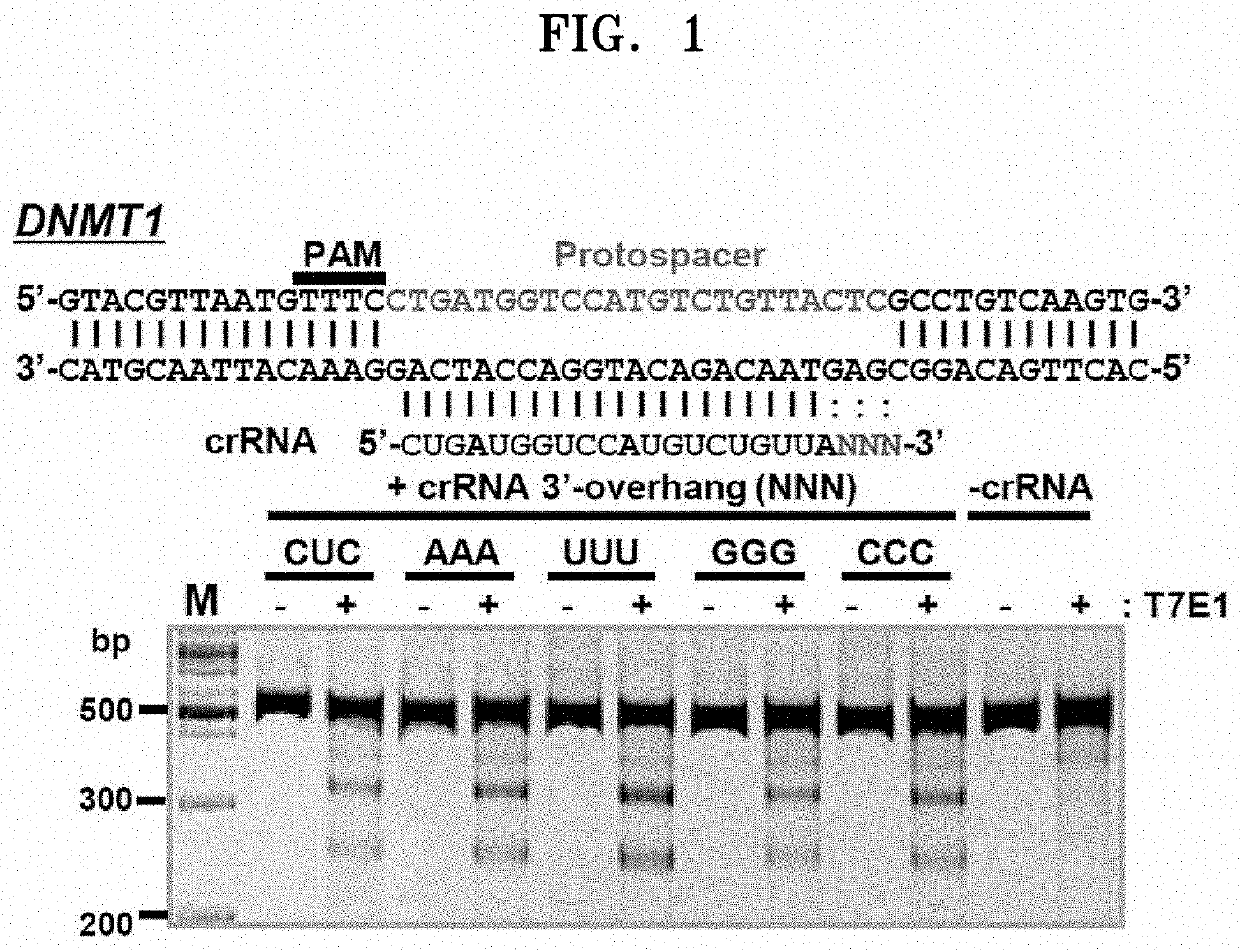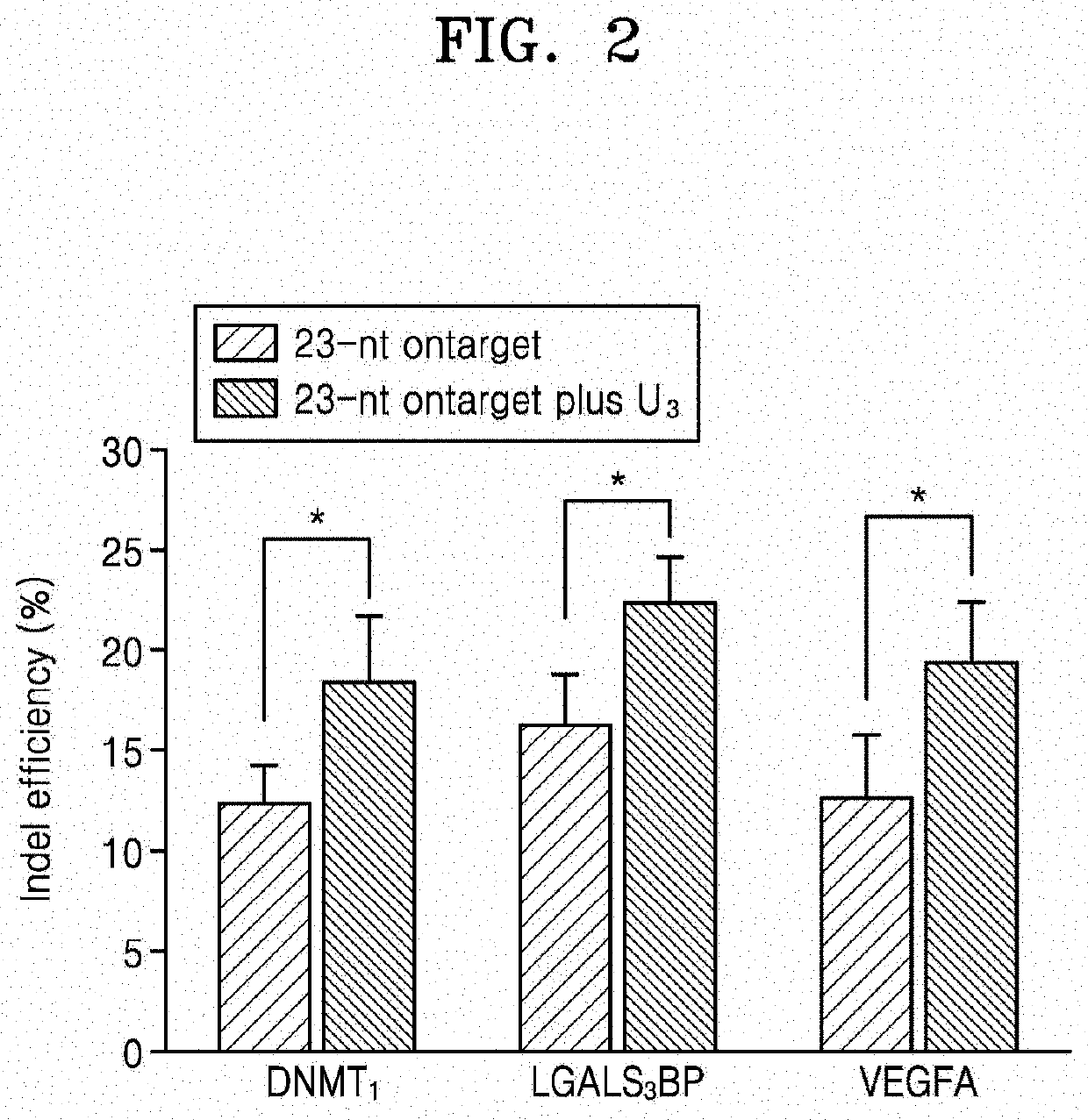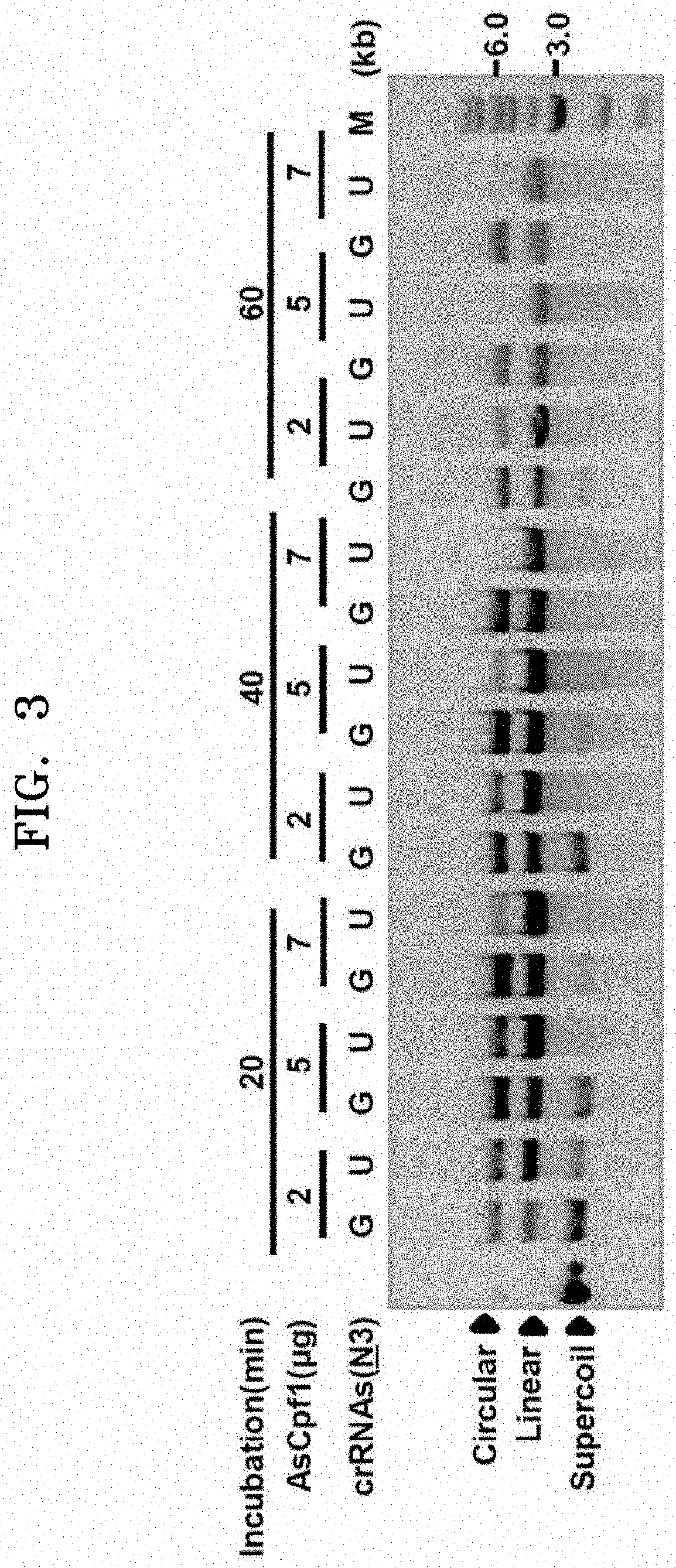Composition for genome editing using crispr/cpf1 system and use thereof
- Summary
- Abstract
- Description
- Claims
- Application Information
AI Technical Summary
Benefits of technology
Problems solved by technology
Method used
Image
Examples
example 1
Confirmation of Effect of crRNA Containing U-Repeat Sequence (U-Rich crRNA) on Improvement of dsDNA Cleavage Efficiency of Ascpf1
[0140]According to the prior literature (Dong et al. Nature 532, 522-538 (2016), Yamano et al. Cell 165, 949-962 (2016)) that performed a structural analysis of the crRNA-Cpf1 complex and target DNA in order to confirm how Cpf1 is guided by crRNA and breaks the DNA double helix on targets having the T-repeat sequence of PAMC, it is known that 3-4 nucleotide residues of the crRNA and the target DNA remain unidentified due to their high flexibility. This implies that the critical nucleotide length of the crRNA required to recognize and bind to a specific target is about 20-nt as in the CRISPR / Cas9 system.
[0141]The present inventors transfected HEK-293T cells with a plasmid vector along with a PCR amplicon that expressed the codon-humanized AsCpf1 gene and crRNA to confirm whether the 3-4 nucleotides at the 3′ end in the crRNA can be simply an unnecessary par...
example 2
Confirmation of Effect of crRNA Having U4AU4 3-Overhang Sequence on Enhancement of Gene Editing Efficiency of Cpf1 (In Vivo)
[0149]In order to confirm whether the U-repeat sequence structure of the crRNA is directly related to the enhancement of the genome editing efficiency in vivo, the indel efficiency was evaluated in HEK-293T cells transfected with a vector construct having a codon-humanized AsCpf1 gene along with a U6 promoter and a crRNA-encoding PCR amplicon including a 20-nt target complementary sequence and a 3′-end mutant sequence (FIG. 15).
[0150]Along with a crRNA-encoding PCR amplicon with a 4-nt 3′-end mutant sequence (A4, G4, T4, C4 or four nucleotides complementary to the target) added to the 20-nt target complementary sequence, the DNMT1 gene was targeted. As a result, it could be confirmed that in the same manner as in the in vitro results (FIG. 1), the indel efficiency was significantly increased compared to other crRNAs (20tA4, 20tG4, 20tC4, and 24t) even when the ...
example 3
Large-Scale Verification of Genome Editing Efficiency of AsCpf1 by U-Rich crRNA Including U-Repeat Sequence
[0159]In order to confirm whether the indel efficiency improved by the U-rich crRNA is sequence-dependent and the U-rich crRNA can be applied to a wide range of targets, the indel efficiency of AsCpf1 was investigated on a large scale and compared with the results obtained from SpCas9.
[0160]First, target genes common to Cpf1 and Cas9 were searched to exclude differences due to target-dependent indel efficiency. Specific targets were searched for against the 5′-TTTV (N)20 NGG-3′ sequence including the PAM sequence for AsCpf1 and SpCas9 and sharing the 20-nt target sequence. As a result, 115 PCR-validated targets were found in HEK-293T cells including 49 exons, 32 introns, and 34 genes (intergenes) (target information is shown in the following Tables 11 and 12). Single-guide RNAs (sgRNAs) and crRNAs were designed to be transcribed from PCR amplicons including the U6 promoter and ...
PUM
| Property | Measurement | Unit |
|---|---|---|
| Fraction | aaaaa | aaaaa |
| Fraction | aaaaa | aaaaa |
| Fraction | aaaaa | aaaaa |
Abstract
Description
Claims
Application Information
 Login to View More
Login to View More - R&D
- Intellectual Property
- Life Sciences
- Materials
- Tech Scout
- Unparalleled Data Quality
- Higher Quality Content
- 60% Fewer Hallucinations
Browse by: Latest US Patents, China's latest patents, Technical Efficacy Thesaurus, Application Domain, Technology Topic, Popular Technical Reports.
© 2025 PatSnap. All rights reserved.Legal|Privacy policy|Modern Slavery Act Transparency Statement|Sitemap|About US| Contact US: help@patsnap.com



